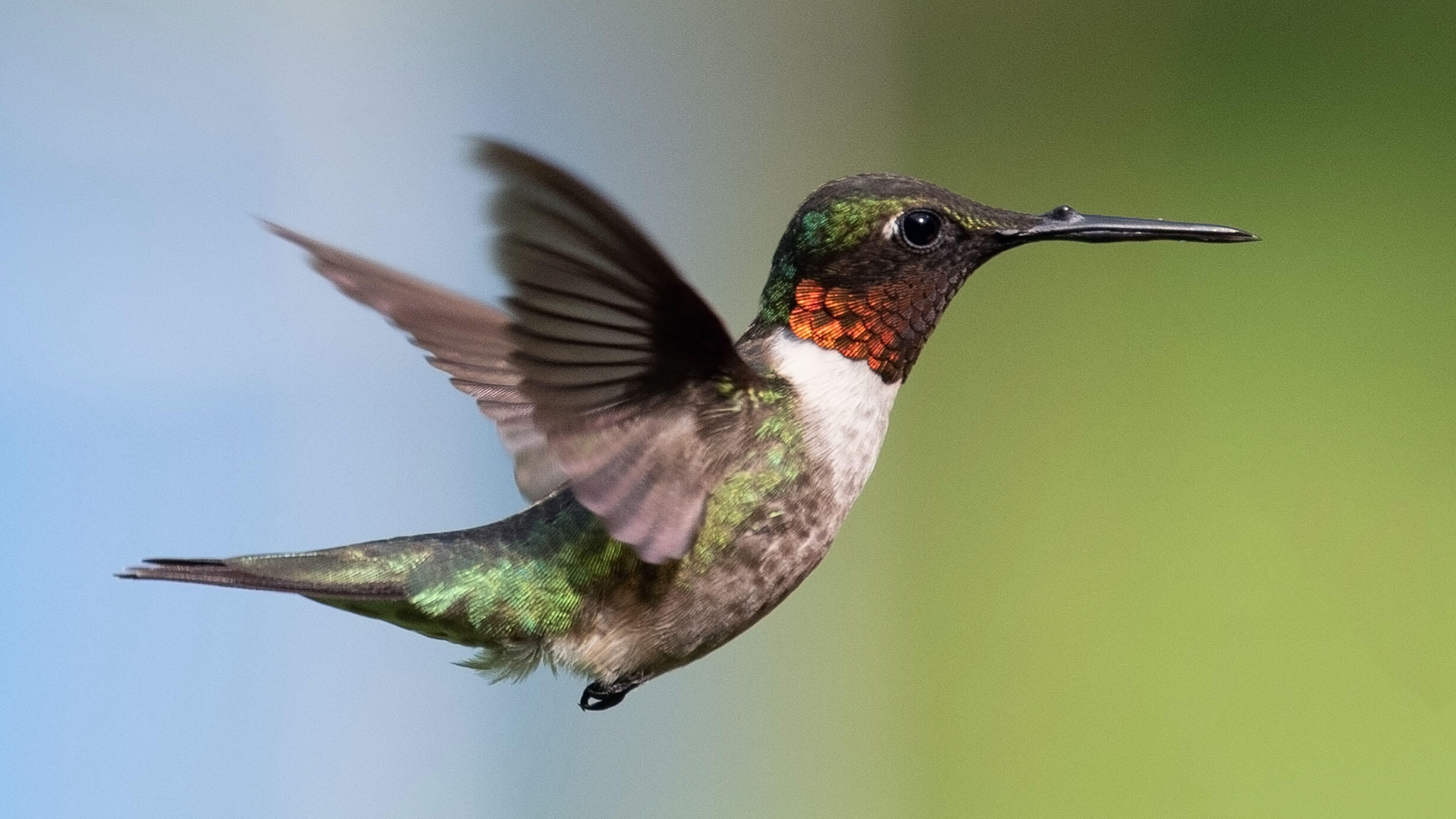 Male Ruby-throated hummingbirds are mostly green except for a small bright red path on their throat, which is used to signal mates.
Male Ruby-throated hummingbirds are mostly green except for a small bright red path on their throat, which is used to signal mates. Courtesy of M. McCarthy/Flickr
Could there be a bird sighting more magical than that of a hummingbird? These fascinating tiny birds appear to hang stationary in mid-air, flapping their wings furiously, in some cases more than 50 times in a single second. Like dragonflies, hummingbirds can fly in all directions: forward, backward, and upside down. They hover as they flit from flower to flower, eating about half their weight in nectar and insects each day.
The male Ruby-throated Hummingbird (Archilochus colubris) is an especially impressive aerialist during courtship, executing an elaborate series of dives, loops, and swoops, spreading its tail, and flashing its vivid red throat to the female.
Visit the special exhibition The Nature of Color—opening March 9—to learn more about coloration in nature.
Visitors to the upcoming exhibition The Nature of Color will be able to see a larger-than-life-sized model of the Ruby-throated Hummingbird, the only hummingbird species to breed in the U.S. east of the Mississippi River. Like the rare sighting of an off-track Rufous Hummingbird a few years ago at the Museum, a Ruby-throated Hummingbird was spotted in 2014—possibly for the first time ever in Manhattan—on a nest in New York’s Central Park.
“While hummingbirds are seen in numbers every year in Central Park and throughout New York City in spring and fall, the nesting in Central Park was a very rare occurrence,” says Paul Sweet, collection manager in the Department of Ornithology, who leads the Museum’s Member Bird Walks.
A few words about coloration—we know most plants, as well as photosynthetic algae and microorganisms, are green because they contain chlorophyll, a chemical that converts sunlight into energy for growing through a process called photosynthesis. But why would a bird, like the male Ruby-throated Hummingbird, be mostly green? Blending in with foliage helps them escape the attention of winged predators above. Its brilliant red throat is a prime example of how bright hues are used throughout the natural world, on the other hand, as a “come-hither” signal to potential mates.
Courtesy of B. Matsubara/Flickr
The Ruby-throated Hummingbird is just one example of a brilliantly colored hummingbird. Anna’s Hummingbird males sport an iridescent magenta head. The Black-chinned Hummingbird’s name is a misnomer because some males actually have a bright purple band instead. And the rare South American species Marvelous Spatuletail has a striking purple, green, and blue body, and two long tail feathers with purplish-blue racquet shapes on the ends.
Starting today, Members can register for Spring Bird Walks in Central Park, which runs March 31–May 22.
A version of this story appeared in the Winter 2020 issue of the Member magazine, Rotunda.